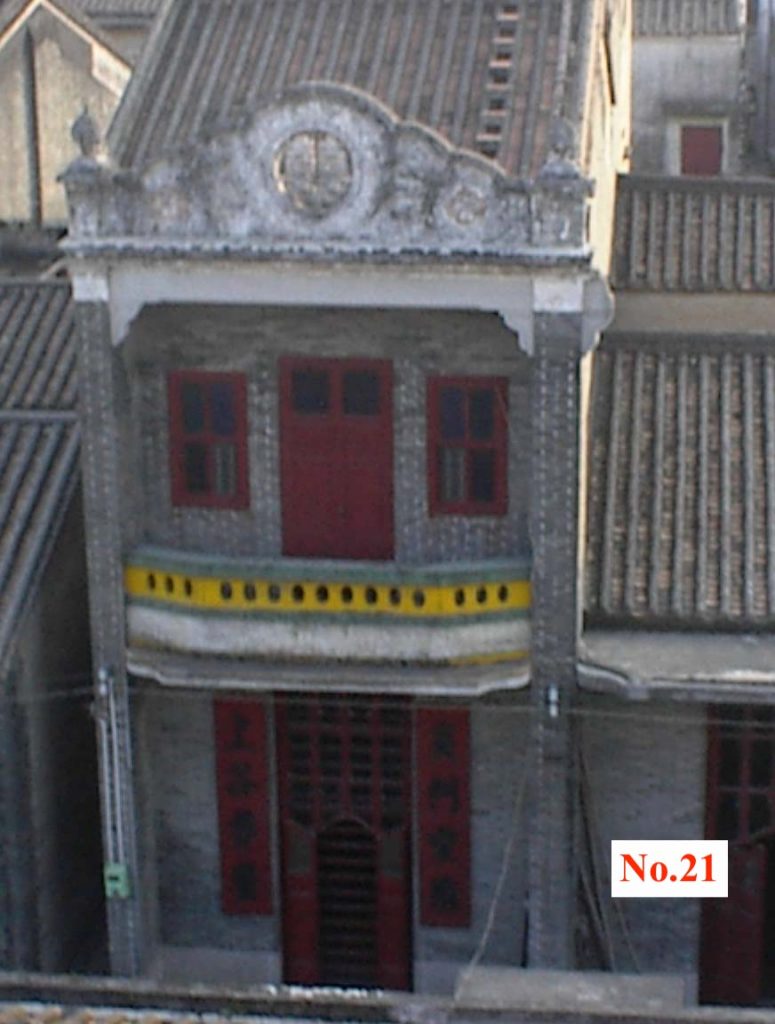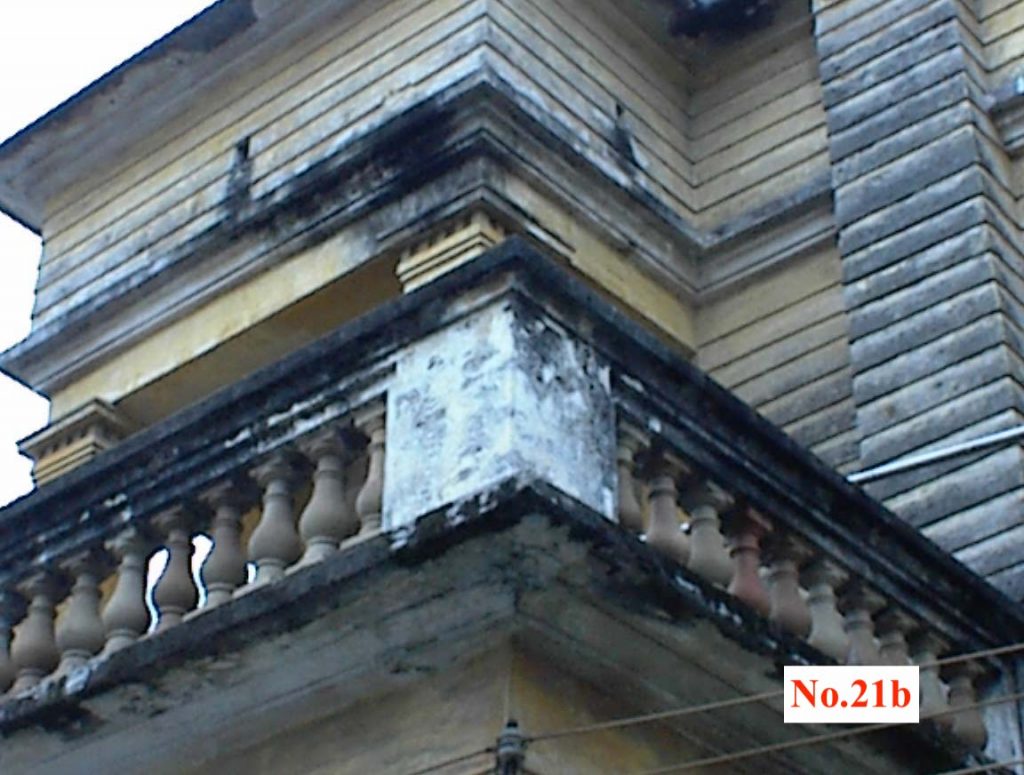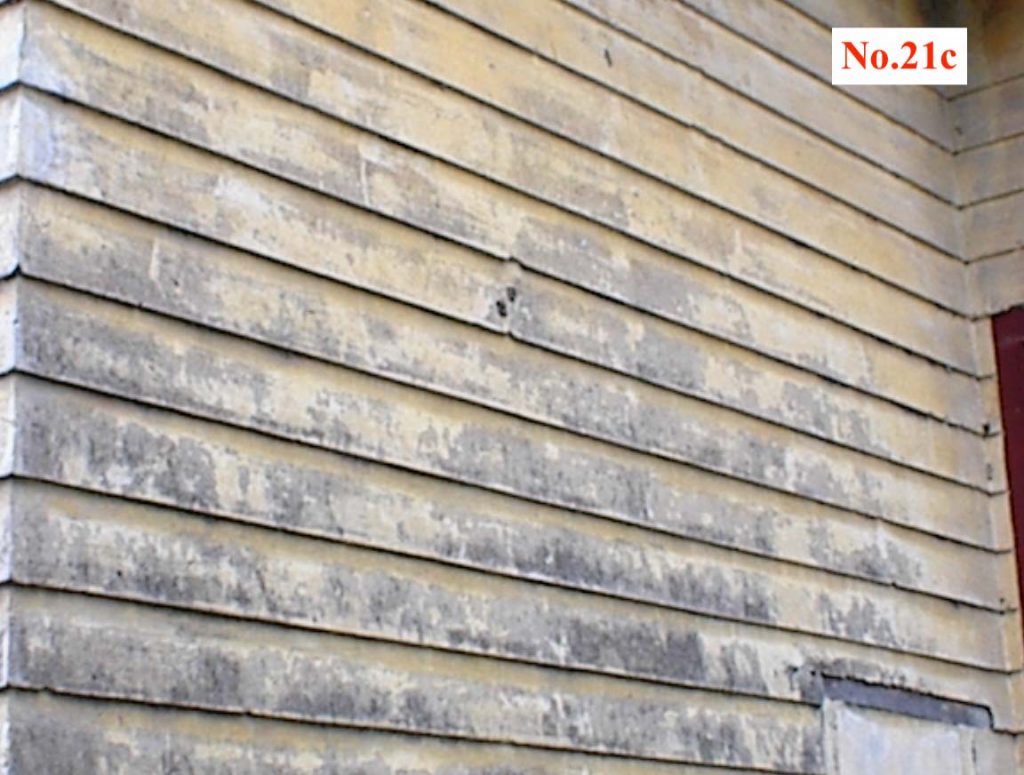
This home in Zhongshan County, southern China is to be found in a street of similar houses that can be distinguished as far as the locals are concerned by the locations from which the money was earned that paid for their erection. Thus they are referred to as the ‘Canadian house’ or the ‘Peruvian house’, and that pictured is known as the ‘Australian house’. While the design looks vaguely like a Sydney terrace it is in fact of a common local style for moderately wealthy families and probably owes its inspiration more to Hong Kong than to any specific locality around the Pacific or South-East Asia where the money to build them was earned and sent from.[1]

For many generations the market gardening of Sydney and most of Australia was dominated by Chinese men who were regarded by the rest of the population as consisting largely of single men doing hard but low paid work. In fact the majority were married men owning a share in the business while carefully building up their families’ assets in the home village. Assets that usually included a new larger family home at some point as well as agricultural land which would be rented out even as the owner continued to lease land in Sydney or elsewhere for his own market gardening. (See, No.7 & No.17.)

This link to the village and family was a major feature of Chinese Australians throughout the 19th and most of the 20th century. Strong attachment to parents, along with that to the ancestral village, meant that initial migration did not occur lightly, even among families with a history of such movement. When, for example, Chang Yet, who had lived in NSW since 1898, was preparing to bring his son, Chang Gar Lock (Arthur Chang – see No.12), to Australia in 1933, he first took him to the village temple, where a promise was made to the local goddess that his son would return to the village.[2]
The knowledge that more money was to be earned in Australia than was ever likely to be possible in their home villages and districts, combined with the support networks that had been developed by relatives and fellow villagers who had gone before, made the sending of young men overseas to earn a viable investment. “Overseas” here meaning many places around the Pacific, of which Australia was simply one.
Australia was however unusual among the many Pacific countries that attempted to limit Chinese entry in recognising the rights of prior residence. This category as ‘domiciles’, including the right to leave and return, created by the Immigration Restriction Act (see No.1) was introduced in 1901 in the interests of a White Australia. This situation meant that by the 1930s market gardening in Australia was in danger as the pre-1901 group of men aged and either died or returned to China; hopefully to a retirement in a comfortable home such as that pictured.
[1] Though a notable exception to this was the home of Wollongong merchant Joe Wah Gow who built his concrete home in the village of Long Tou Wan in imitation Australian weatherboard. See image 21b and 21c.
[2] Interview with Arthur Gar Lock Chang, Sydney, 7 March 1998.
For more on market gardens see Chinese market gardens in southern and western New South Wales by Barry McGowan

